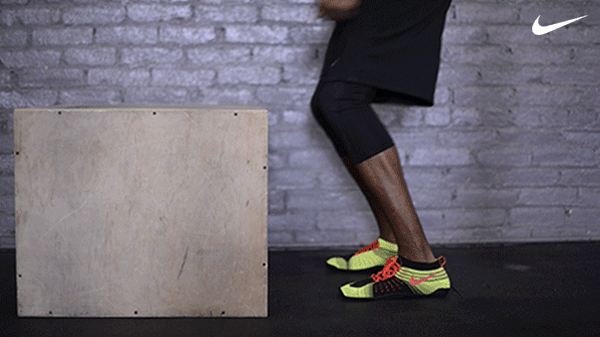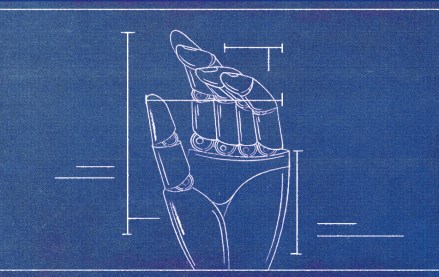
GIFs have — however you pronounce them — taken over the Internet. They serve as pithy (some say lazy) shorthand responses to blog posts and comment trolls. They can be minimalist works of art; they can be slapstick comedy. And, as of this morning, they can double as links in an embedded tweet or Facebook post.
This morning Nike tweeted this from its Pro Training account:
Flexibility for every move. Support for every workout. The Nike Free Hyperfeel TR is available now. https://t.co/GNkOAMhcW8
— Nike Pro Training (@nikeprotraining) May 14, 2014
At first glance, the above appears to be a simple tweet linking back to a brand’s product. But, for the first time, the GIF itself is the link. Normally a tweet such as this would require two links: One for the embedded GIF and a second for the link back to Nike’s product page. But thanks to a new bit of coding by GIF hosting site Giphy, users can create a shortened URL which, when tweeted, shows up as a GIF in the tweet.
“Normally, when you refer people to content, you send them your branded shortened link,” said Giphy’s director of strategy, Adam Leibsohn. “Instead of a link, you could have a GIF do all that work. Now basically you can have a GIF point to anything you want.”
Nike is just the first to partner with Giphy on this, but there are more to come, said James Cooper, head of creative at Betaworks, which is an investor in Giphy.
“We can envisage a future where marketers are doing entire campaigns with GIFs,” said Cooper. “You can expect it to roll out with other folks shortly.”
Anybody who pays the slightest attention to social media knows that the use of GIFs has grown and continues to proliferate. Over the last two years, there were over 2.2 million GIFs shared on Twitter alone, according to social media analytics firm Crimson Hexagon.
“The rise of image-based content and the GIF creates new opportunities for marketers to better understand and connect with their customers,” Jehan Hamedi, Crimson Hexagon’s senior manager of strategic market development, wrote in an email to Digiday.
“The challenge, though, will be in applying the right analytics to gain a complete picture of this now multi-layered conversation and in using this information to drive meaningful engagement.”
Nike declined to comment for the story. With just seven retweets in five hours, its GIF’ed-out tweet isn’t exactly viral gold. However, one could easily imagine other campaigns where embeddable, linkable GIFs make sense. Movie studios might tweet out GIFs of their new trailers, for example. Publishers could similarly link to stories from gifs embedded in Facebook posts.
“I personally welcome a multitasking GIF. Anything that helps me convey more information to my followers within the limited confines of Twitter is a huge plus,” Kayla Epstein, social media producer for the Guardian US, wrote in an email to Digiday.
“I think it’s a cool idea,” agreed Meredith Modzelewski, social media director at Behrman Communications, a lifestyle and beauty public relations firm. “Not only does it save actual characters on Twitter where space is a premium, but so many of us communicate visually and via GIF all over the Web at this point — this seems like a natural next step.”
Only fitting, perhaps, that the step would be taken in a shiny new pair of shoes.
More in Marketing

Best Buy, Lowe’s chief marketing officers explain why they launched new influencer programs
CMOs launched these new programs in response to the growing importance of influencers in recommending products.

Agencies create specialist units to help marketers’ solve for AI search gatekeepers
Wpromote, Kepler and Jellyfish practices aim to illuminate impact of black box LLMs’ understanding of brands search and social efforts.

What AI startup Cluely gets — and ad tech forgets — about attention
Cluely launched a narrative before it launched a tool. And somehow, it’s working.





